Synthetic Monitoring
Overview
Synthetic Monitoring allows you to observe your systems and application's performance using simulated requests from global locations. You can simulate network traffic and measure its performance under various constraints and conditions. Anticipate performance issues, prevent impact on end-users, and efficiently detect and troubleshoot network issues.
Create Synthetic Monitor
Step 1: Create A New Test
1.1. Navigate to Synthetic Monitoring
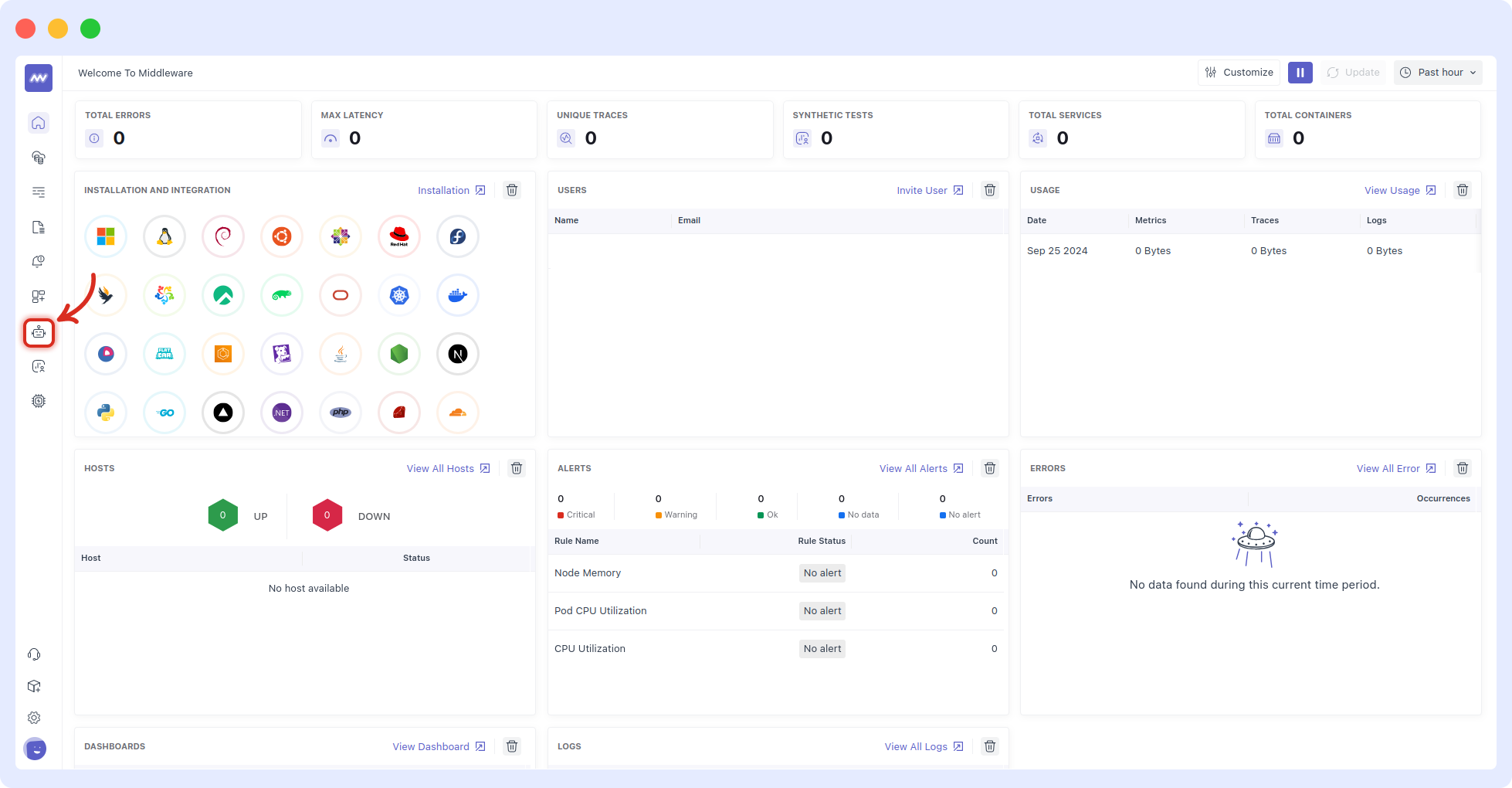
1.2. Click Add New Test

Step 2: Choose Your Request Type
The Default Request Type is set to HTTP if you do not specify it in this section.
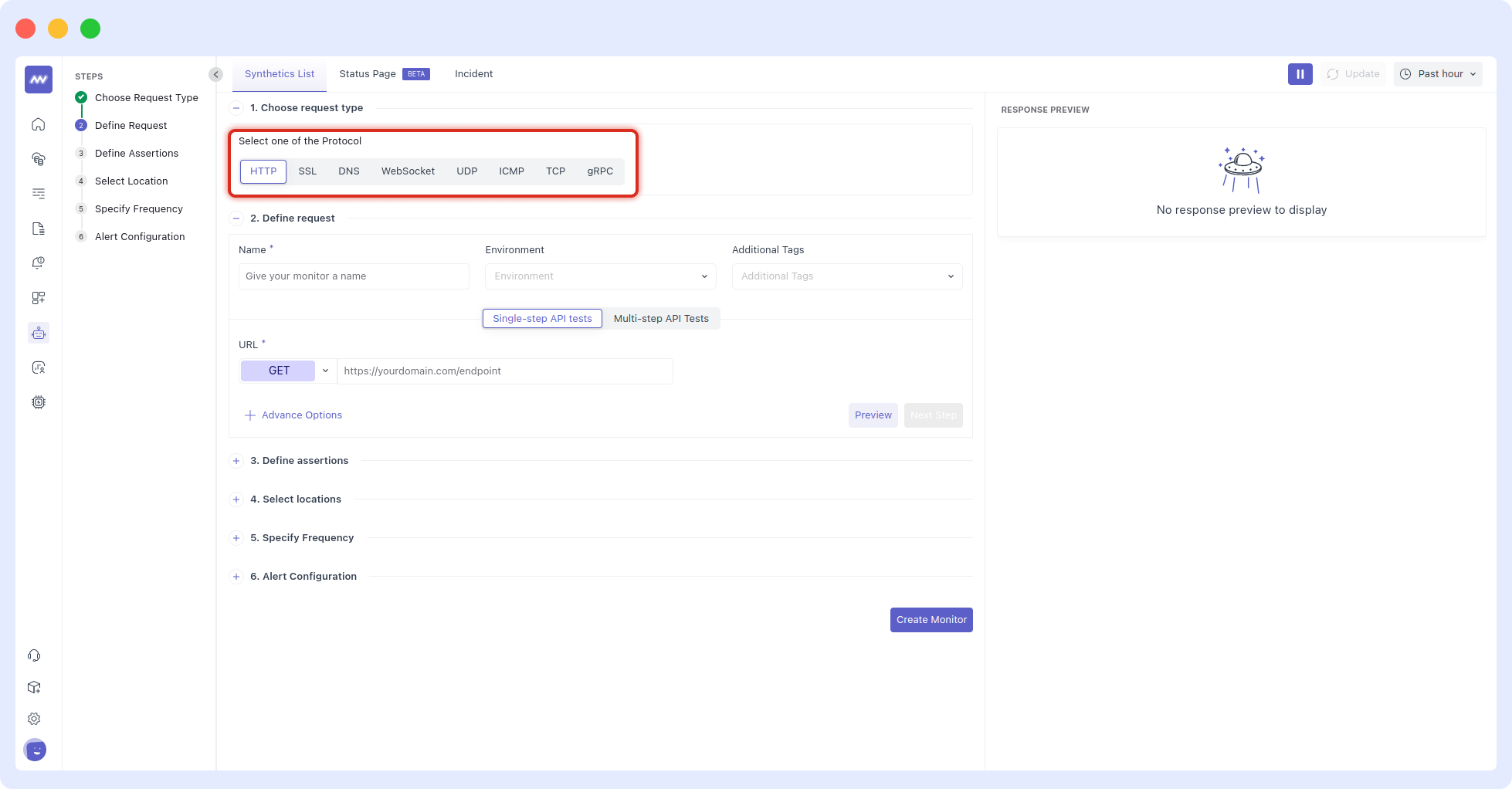
Step 3: Define Request
3.1. Name Your Request
3.2. Choose Your Environment
3.3. Add Tags
3.4. Select Single-step API tests
3.5. Select the HTTP method (GET, POST, DELETE etc) and add URL of the HTTP endpoint you want to test.
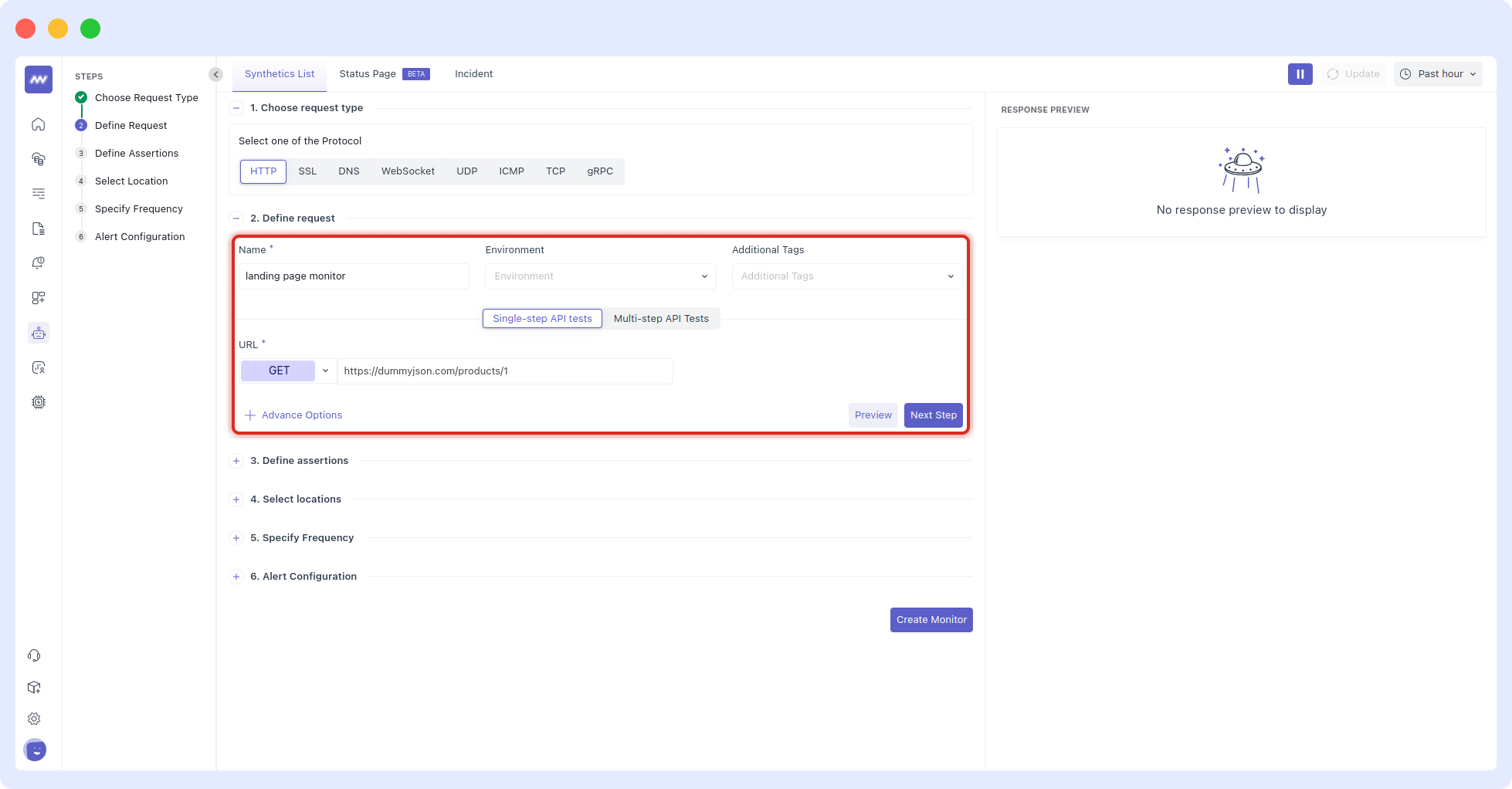
Step 4: Define Assertions
From dropdown select appropriate values for assertion.
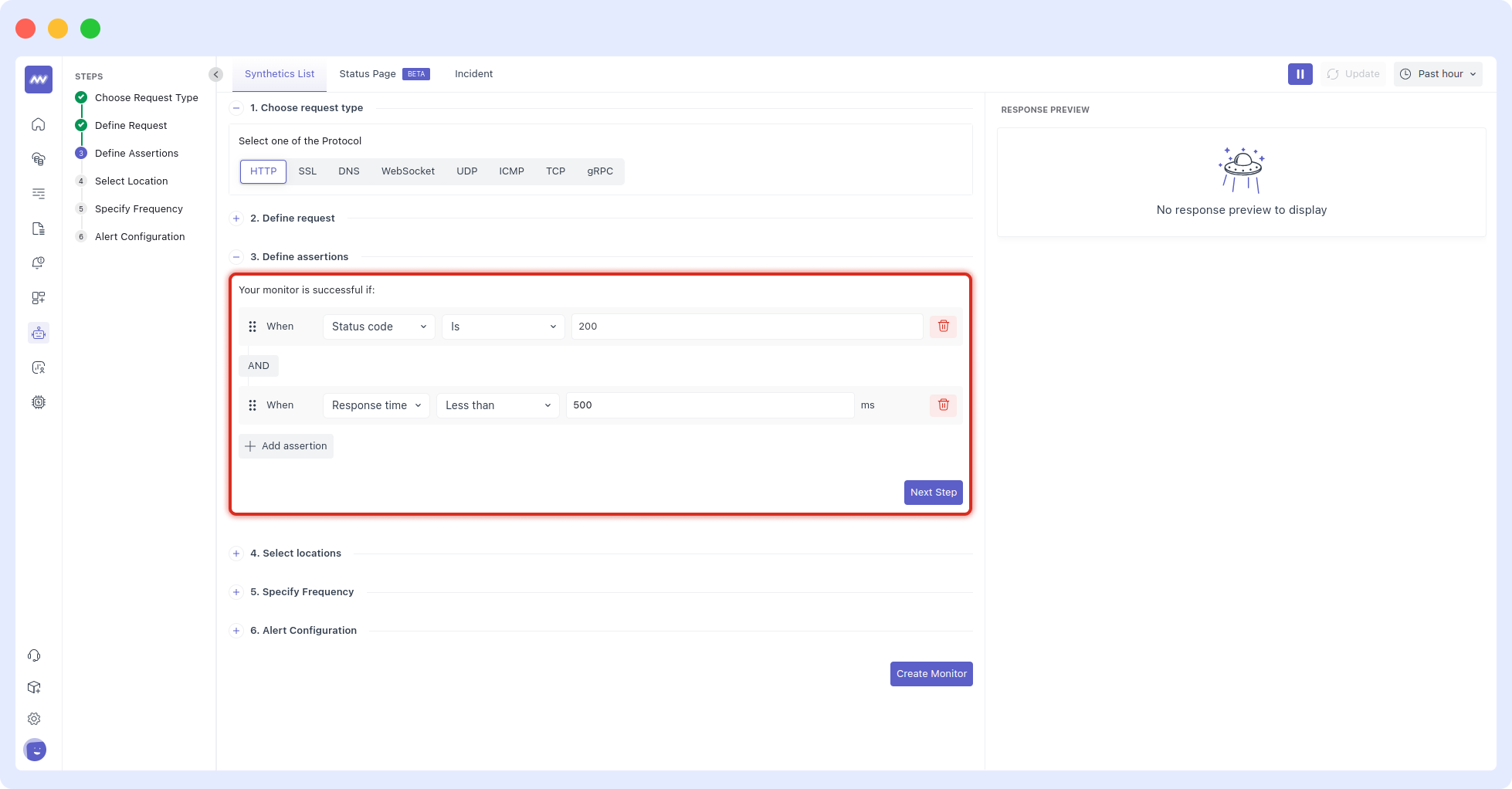
Step 5: Select Locations
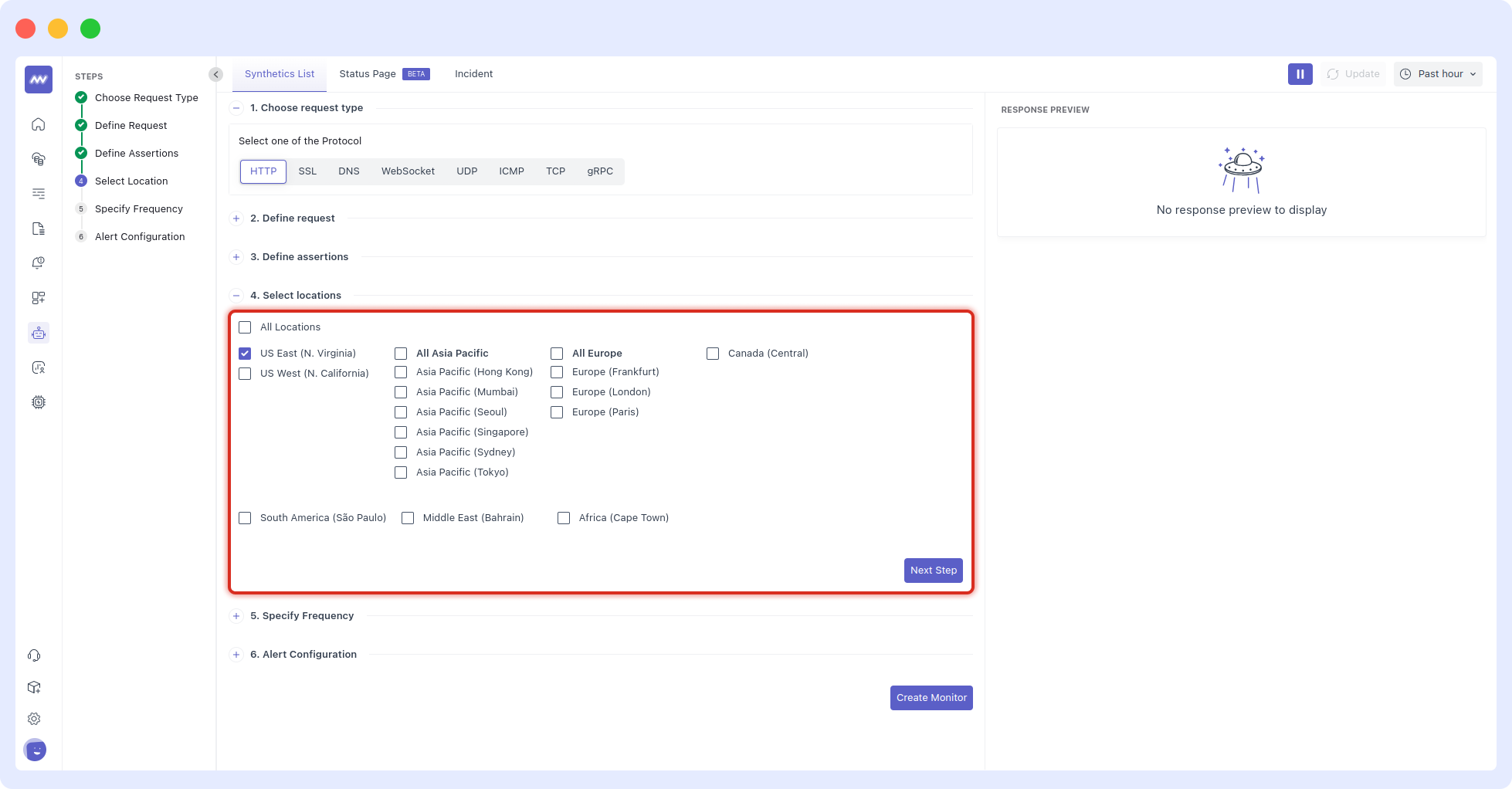
Step 6: Specify Test Frequency
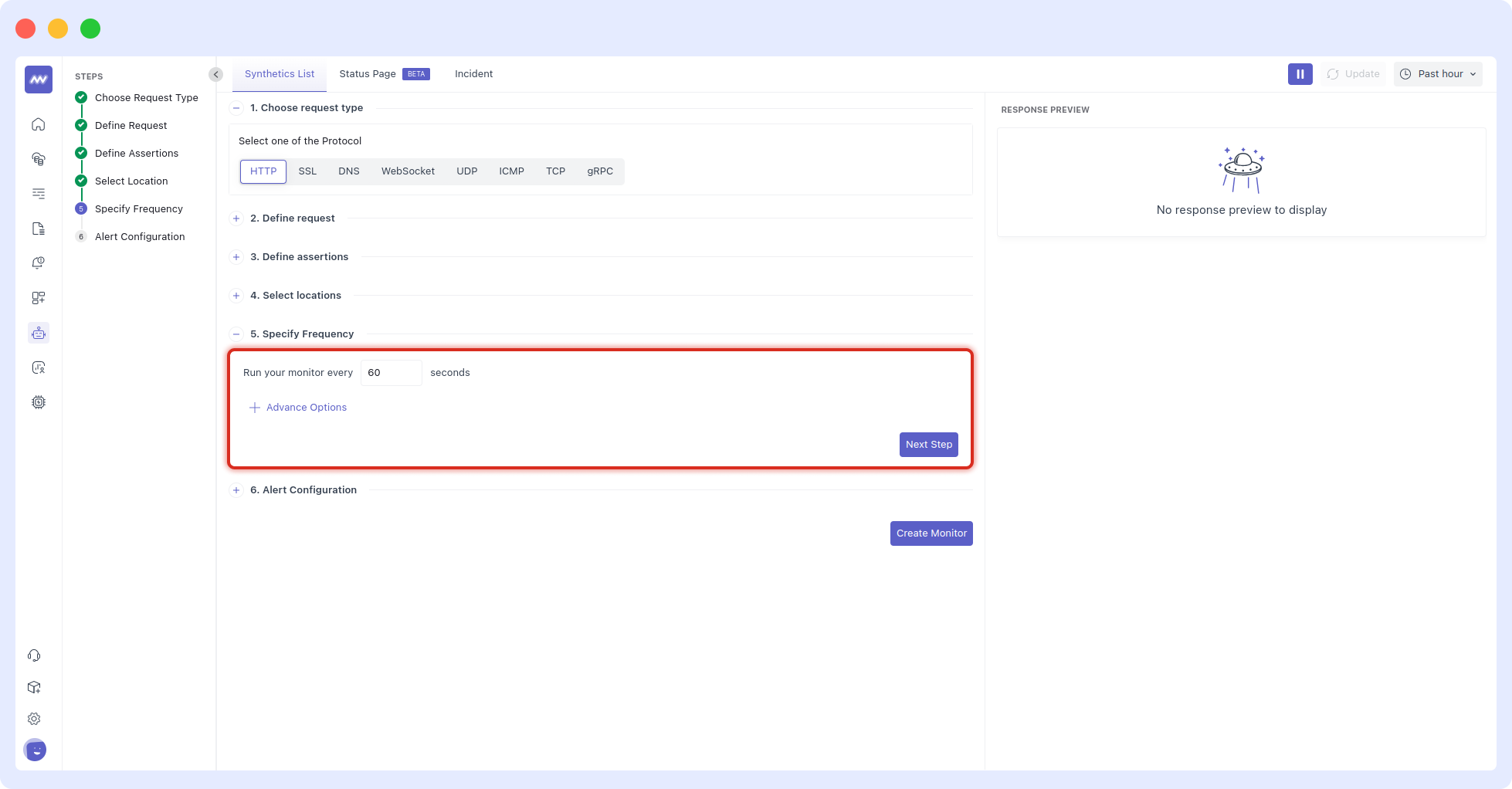
Step 5: Choose Notification Source
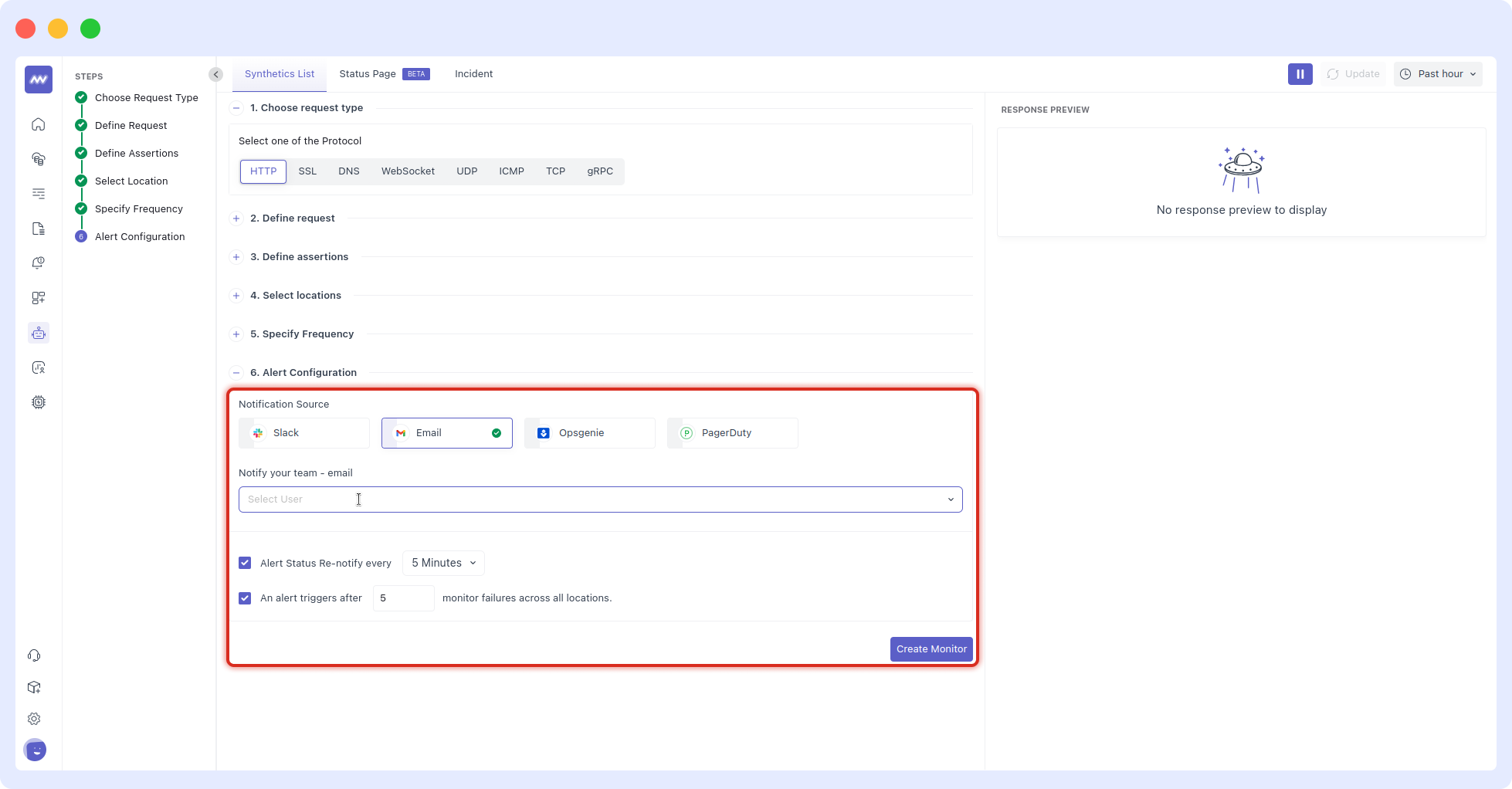
Request Types
HTTP
HTTP requests monitoring is a technique used to monitor the performance and availability of web applications or websites. It involves simulating HTTP requests and measuring the response time, status code, and content of the response.
SSL
SSL monitoring is a technique used to monitor the performance and availability of SSL/TLS certificates used by web applications or websites. It involves simulating SSL/TLS handshakes and measuring the certificate validation time, certificate expiration, and other certificate-related metrics.
DNS
DNS synthetic monitoring is a technique used to monitor the performance and availability of DNS servers and DNS resolution for a domain name. It involves simulating DNS queries and measuring the response time and accuracy of the DNS server.
WebSocket
WebSocket test synthetic monitoring is a technique used to monitor the performance and availability of WebSocket connections used by web applications. It involves simulating WebSocket connections and measuring the response time, message delivery time, and message accuracy.
UDP
UDP (User Datagram Protocol) synthetic monitoring is a technique used to monitor the performance and availability of UDP connections used by network applications. It involves simulating UDP packets and measuring the response time, packet loss, and other metrics.
ICMP
ICMP (Internet Control Message Protocol) synthetic monitoring is a technique used to monitor the performance and availability of network connections using ICMP packets. It involves simulating ICMP packets and measuring the response time, packet loss, and other metrics.
TCP
TCP (Transmission Control Protocol) synthetic monitoring is a technique used to monitor the performance and availability of TCP connections used by network applications. It involves simulating TCP connections and measuring the response time, packet loss, and other metrics.
gRPC
gRPC synthetic monitoring is a technique used to monitor the performance and availability of gRPC connections used by network applications. It involves simulating gRPC requests and measuring the response time, error rate, and other metrics
Public IP Addresses
Our synthetic agent is designed to test different networks and protocols of your application. If your system has restricted access to certain networks only, you will need to whitelist the following public IP addresses of our infrastructure. This will allow our synthetic agent to access your services for monitoring.
Please note that we may add, remove or change server IP addresses for security and performance reasons. We will notify you in advance of any planned changes.
| US | Asia Pacific | Europe | Canada | South America | Middle East | Africa |
|---|---|---|---|---|---|---|
| North Virginia 184.73.132.14 | Hong Kong 16.162.16.221 | Frankfurt 52.57.15.39 | Central Canada 3.97.34.227 | São Paulo 54.207.185.173 | Bahrain 15.184.102.232 | Cape Town 13.244.83.119 |
| California 18.144.107.2 | Mumbai 35.154.132.98 | London 3.11.236.173 | ||||
| Seoul 43.201.168.121 | Paris 52.47.67.164 | |||||
| Singapore 52.76.158.43 | ||||||
| Sydney 13.210.225.158 | ||||||
| Tokyo 54.249.157.179 |
Need assistance or want to learn more about Middleware? Contact our support team at [email protected].